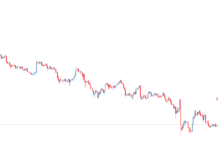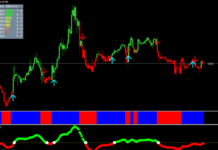According to great wisdom, everything that can be automated must be automated. Strangely enough, this is especially true for manual trading. Think of it: after all, the more tasks the program will give, the more time for manual analysis will remain. Especially when we talk about the potential trading opportunities, such as candlestick patterns. So, today we are talking about a useful tool for finding pin bars on the chart – the Pin Bar Dashboard indicator.
Before reading the article and writing your questions in the comments section, I recommend watching this video. It’s not long but covers the biggest part of questions on the topic.
Table of Contents
What a pin bar is
In the technical analysis in various markets, including Forex, an important role is played by the Japanese candlesticks. Researchers have long identified certain combinations of candlesticks, characteristics of various types of price behavior. These combinations are called candlestick models or patterns. One of such models is a pin bar.

A pin bar is defined as an average candlestick in a pattern of three bars. This candlestick is characterized by a long tail in one direction and a short (or absent) body. Usually it involves a trend reversal, sometimes a continuation of the movement. Most correctly, this pattern works on periods from an hour to a month.
For the first time this term appeared in the book by Martin Pring “On Price Patterns.” There are four types of pin bars. The first is a bullish pin bar, indicating a trend reversal, the second is a bearish pin bar, indicating a reversal, the third is a bullish pin bar of trend continuation, and the fourth is a bearish pin bar of trend continuation.
For more information about the varieties of pin bars and how to tie pin bars, see a separate article.
Installation and configuration
The process of the indicator installation is carried out according to the usual instructions. First, open the terminal data directory via File – Open Data Catalog.
Then, go to the folder MQL4 – Indicators, where you need to copy/drag the indicator file “Pin Bar Dashboard.ex4“. Restart the terminal for the changes to take effect.
After that, the indicator appears in the navigator window. To start, simply drag the indicator to the chart. The settings window will appear.

The “Symbols” parameter is responsible for the list of tools on which the patterns will be searched. Then follows the list of timeframes. If you, for example, want to receive signals only from an hourly timeframe, leave “true” in the “Is H1 Timeframe Enabled” field and put all others to “false”. Here you can also customize the color scheme of the indicator, fonts, sounds and method of alerts.
Interface Description

The indicator panel is a table with the ability to sort by ascending and descending values. Each line is responsible for a certain setup with the following characteristics:

- The name of the instrument;
- Period of the chart;
- Direction: Bearish or Bullish;
- Pattern name;
- Pattern age (number of bars back);
- Price upon completion of formation;
- Link to the chart.
For example, you can sort the sets by age, leaving the newest signals at the top of the list.
By default, the indicator signals the appearance of a new signal using the standard MT4 alarm.

For quick access to the chart, click on the button with the name of the pair and the timeframe opposite the appeared signal (the last column of the table). On the chart, the pin bar found will be marked with a blue or red smiley.

Tips for use
Before you use the indicator in trading, you need to understand its main purpose. The most important thing is not to try to interpret indicator signals as a momentary call to action. It is rather a tip-off on a potentially profitable setup, but nothing more. The indicator in no way excludes the complex analysis: a trader should carry it out.
The most banal filter which we can apply is to use support/resistance levels to confirm the input. After all, as you know, a pin bar, formed at a strong support/resistance level, is a good trading setup.
For example, after receiving a signal about the formation of a bullish pin bar, draw a horizontal line near its tail.

After that, we remove the chart and see if this level constitutes strong support. In this case, the price tested the level at least 3 times in the previous two days. This can be considered a good confirmation of the bullish pattern of a pin bar.

Open a long deal with a market order. The take profit should be set at the nearest resistance level. In this case, the nearest extremum is 10 points from the entry point. The stop loss is slightly below the support level, but not more than the take profit.
Conclusion
The main advantage of the indicator is the simultaneous monitoring of many tools and timeframes. Carrying out such an analysis manually is extremely inefficient. Your goal is to get a new signal, analyze it and already make a final decision on opening a trade. In this way, you will be able to process many more potential setups, which you can skip when analyzing only manually.






Damn coach, I couldn’t have explained any way better. I really enjoyed this, this time i will blast the market.
Thanks you very much
Sir, thank you for sharing a fraction of your knowledge in trading. crystal clear! how i wish i could meet u in person and learn everything from the horse’s mouth
Video not very clear, everything else looks good
I concur with you. Rejection of higher or lower prices is the way to look at the markets to get trading opportunities
Than you sir!!!
That is fair enough. You don’t show only rosy pictures; rather cover all the aspects of trading. Hats off sir
Thumbs up sir